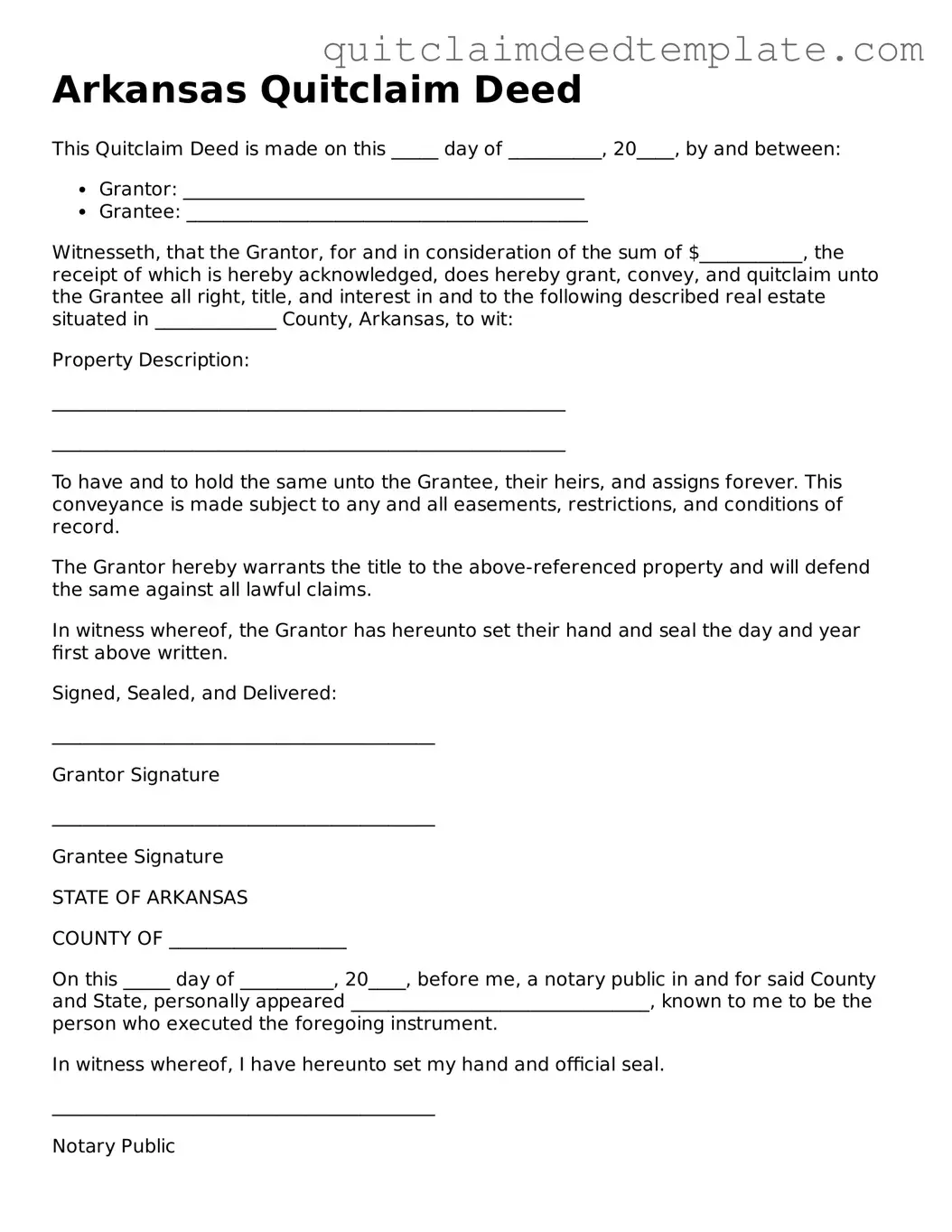Documents used along the form
The Arkansas Quitclaim Deed is a vital document for transferring property ownership. However, several other forms and documents often accompany it to ensure a smooth and legal transaction. Here’s a list of related documents you may need.
- Warranty Deed: This document provides a guarantee from the seller that they hold clear title to the property and have the right to sell it. It offers more protection to the buyer compared to a quitclaim deed.
- Property Transfer Tax Form: This form is required to report the transfer of property for tax purposes. It helps local authorities assess any applicable transfer taxes.
- Title Search Report: This report outlines the history of ownership and any liens or encumbrances on the property. It is essential for ensuring that the title is clear before the transfer.
- Affidavit of Consideration: This document states the amount paid for the property. It is often required by county clerks to ensure accurate record-keeping.
- Closing Statement: This document details all financial transactions involved in the sale, including the purchase price, closing costs, and any adjustments. Both parties review it before finalizing the sale.
- Power of Attorney: If one party cannot be present to sign the deed, a power of attorney allows another person to act on their behalf. This document must be properly executed to be valid.
- Mortgage Documents: If the buyer is financing the purchase, these documents outline the terms of the loan, including interest rates, payment schedules, and obligations of both parties.
Each of these documents plays a crucial role in the property transfer process. Ensuring you have all necessary forms can help prevent legal issues and streamline the transaction.
